Tom's Hardware Verdict
Team Group’s EX2 is a budget-oriented 2.5” SATA 6 Gbps SSD that’s responsive under light workloads, but it’s not worth the purchase when better SSDs are only a few dollars more.
Pros
- +
Low-cost
- +
Responsive performance within the cache and fast to recover
Cons
- -
Plastic casing
- -
3-year warranty
- -
Lacks hardware-based AES 256-bit encryption
- -
Incredibly slow write speeds after cache fills
Why you can trust Tom's Hardware
Team Group‘s EX2 is a low-cost SATA SSD composed of a mix of both new and old hardware that is fairly similar to the Crucial BX500. Combining both TLC flash and Silicon Motion’s somewhat dated DRAMless SM2258XT SSD controller, Team Group has created a low-cost SSD that delivers mixed signals. On the one hand, the BiCS4 96-layer TLC flash is typically more reliable than QLC, but on the other, the dated controller makes for inconsistent performance under mixed and write-heavy workloads.
Team Group’s EX2 wouldn’t be our first choice in upgrading our own systems, especially because its sustained write performance can tank to slower speeds than the Crucial BX500, and even HDDs. It’s not much cheaper than competitors, but if you’re pinching pennies and you are fine with the performance trade-offs, the EX2 may be worth your consideration if you don’t write a lot of data to your drive and you can snag it for a very low price.
Specifications
| Product | EX2 512GB | EX2 1TB | EX2 2TB |
|---|---|---|---|
| Pricing | $53.99 | $89.99 | $ 189.99 |
| Capacity (User / Raw) | 500GB / 512GB | 1000GB / 1024GB | 2000GB / 2048GB |
| Form Factor | 2.5" SATA | 2.5" SATA | 2.5" SATA |
| Interface / Protocol | SATA 6 Gbps / AHCI | SATA 6 Gbps / AHCI | SATA 6 Gbps / AHCI |
| Controller | Silicon Motion SM2258XT | Silicon Motion SM2258XT | Silicon Motion SM2258XT |
| DRAM | DRAMless | DRAMless | DRAMless |
| Memory | SanDisk 96L TLC | SanDisk 96L TLC | SanDisk 96L TLC |
| Sequential Read | 550 MBps | 550 MBps | 550 MBps |
| Sequential Write | 520 MBps | 520 MBps | 520 MBps |
| Security | AES 256-bit encryption | AES 256-bit encryption | AES 256-bit encryption |
| Endurance (TBW) | 400 TB | 800 TB | 1,600 TB |
| Part Number | T253E2512G0C101 | T253E2001T0C101 | T253E2002T0C101 |
| Warranty | 3-Years | 3-Years | 3-Years |
The EX2 comes in three capacities of 512GB, 1TB, and 2TB, priced at roughly $0.0-$0.11 per gigabyte. Team Group rates the EX2 to hit sequential read and write speeds of up to 550/520 MBps, but unlike most SSDs, it lacks performance ratings for random workloads. Team Group’s EX2 is backed by a three-year warranty and comes with some solid endurance ratings, though.
The drive uses Silicon Motion’s proprietary NANDXtend ECC, which utilizes 1KB codeword LDPC and RAID, along with SRAM ECC and end-to-end data path protection to ensure data integrity. The EX2 is rated to endure up to 400TB of writes per 512GB of capacity within its warranty period, which is much higher than most of its QLC-based competitors.
A Closer Look
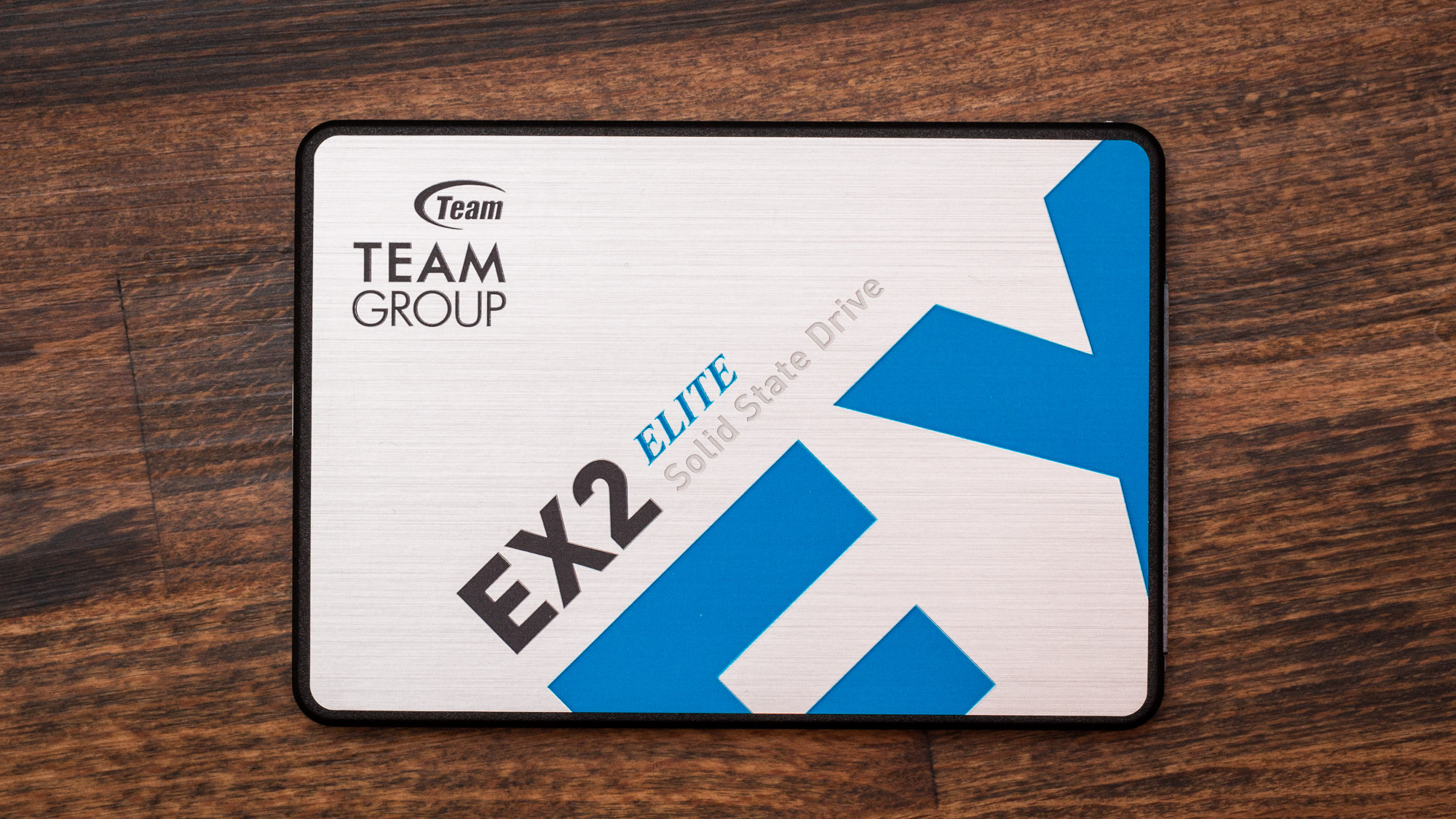
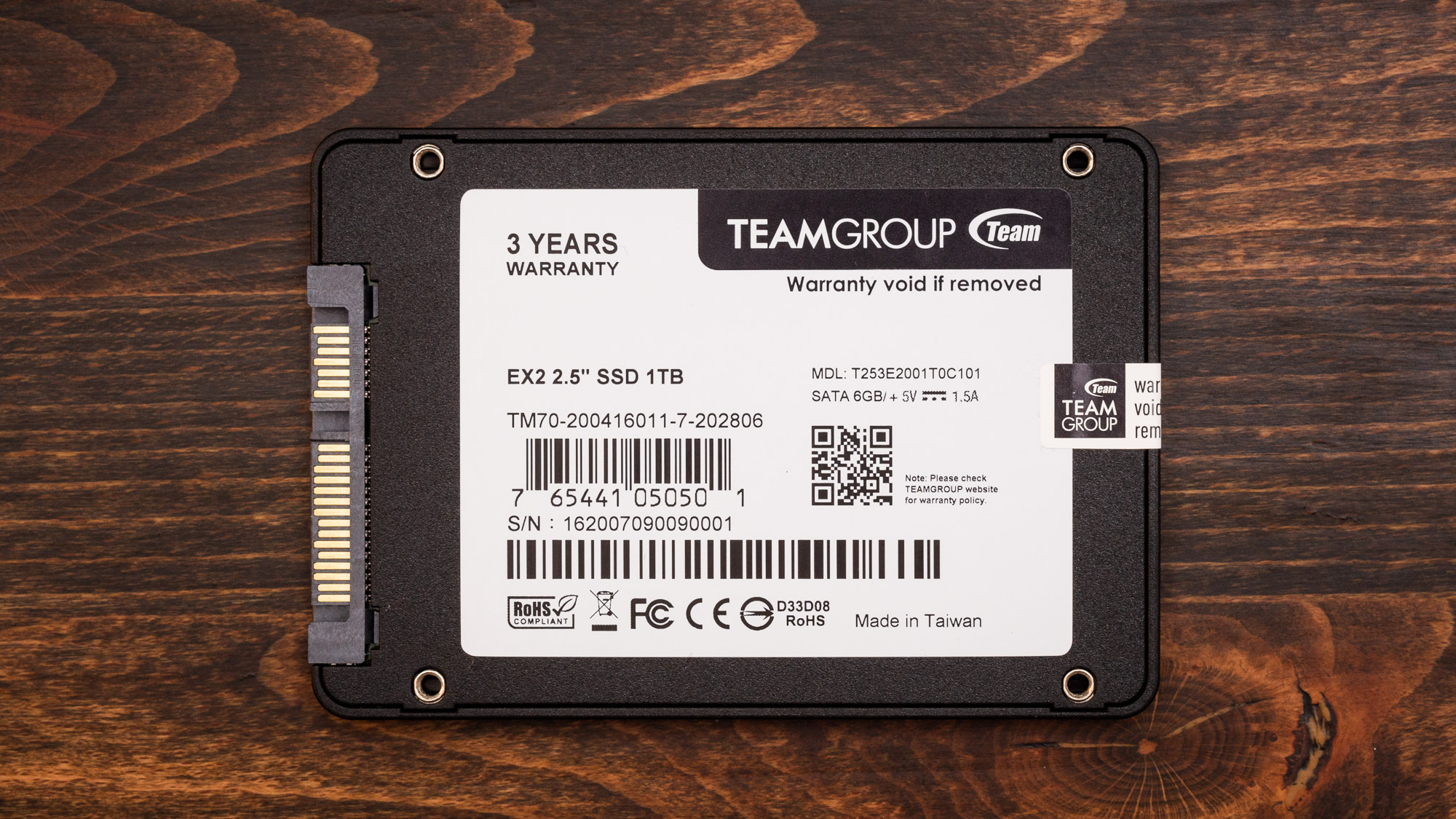
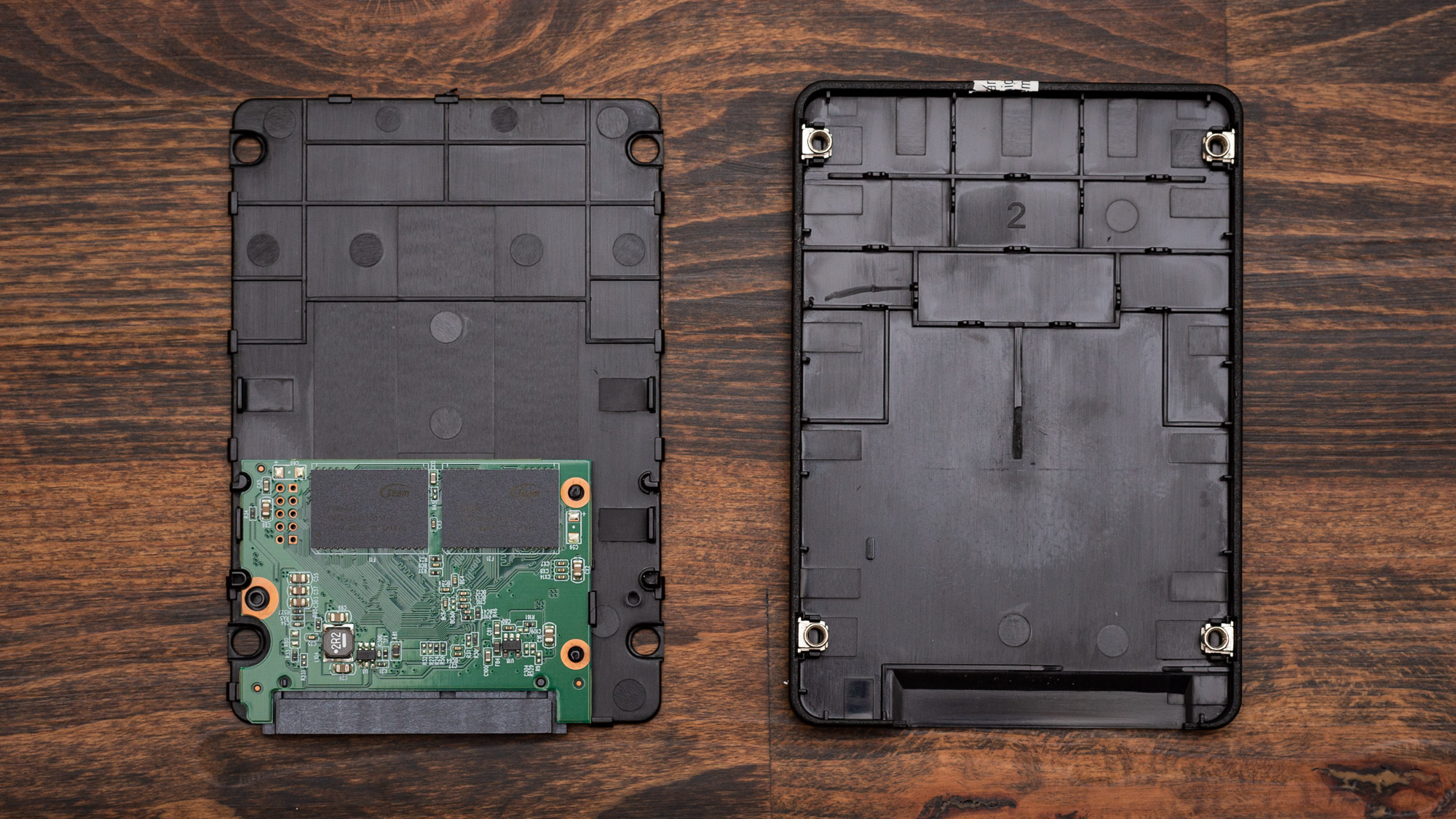
A large sticker with a brushed metal-like finish covers the top of the Team Group EX2, and depending on your preference, the look may be a pro or a con. We prefer the more sophisticated look of Samsung’s SATA SSDs and the like more than the EX2. The EX2 comes in a 2.5” 7mm form factor and is mostly made of plastic to reduce cost. Internally, the PCB snaps into the casing and the casing snaps together without any need for screws.
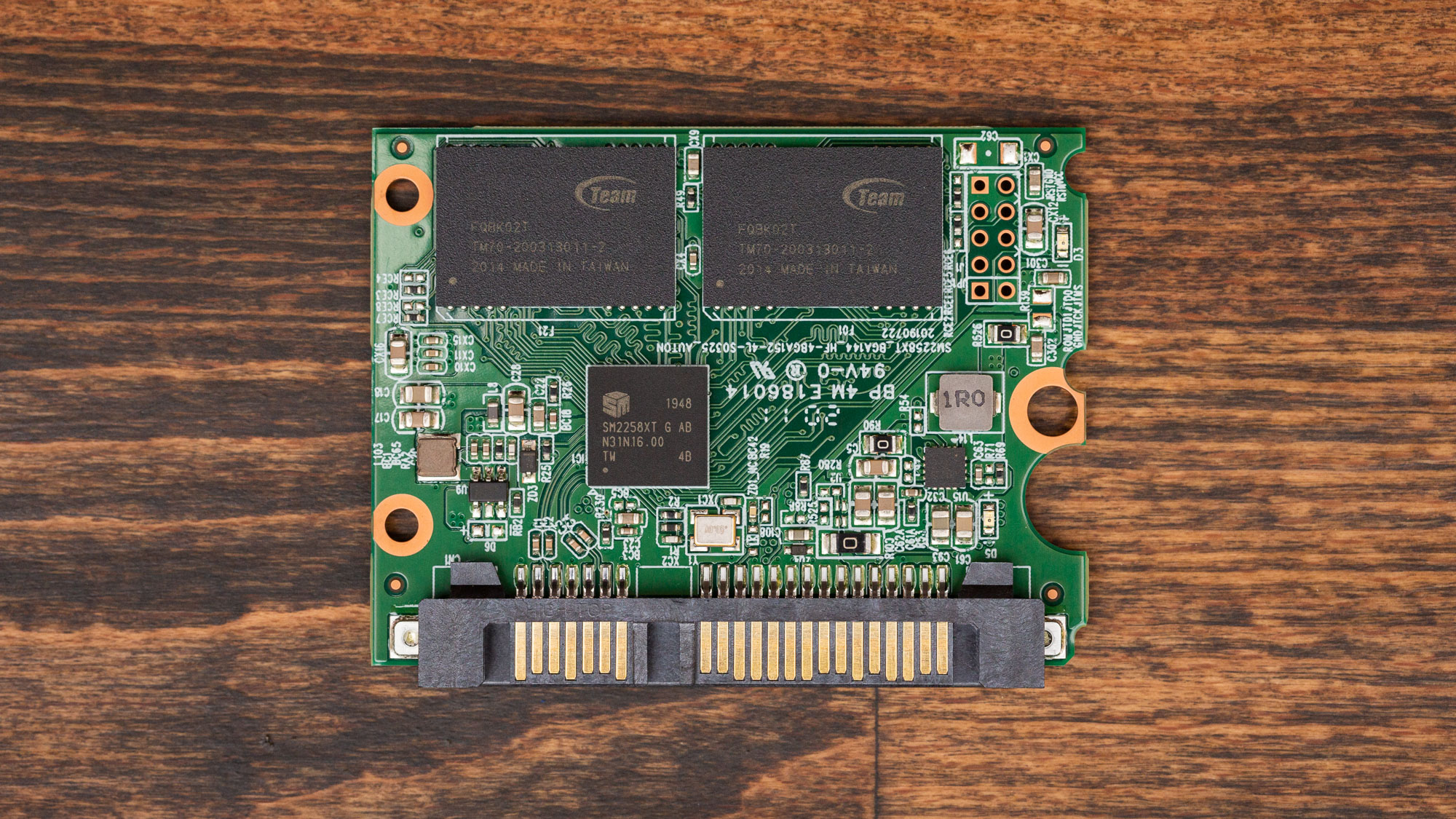
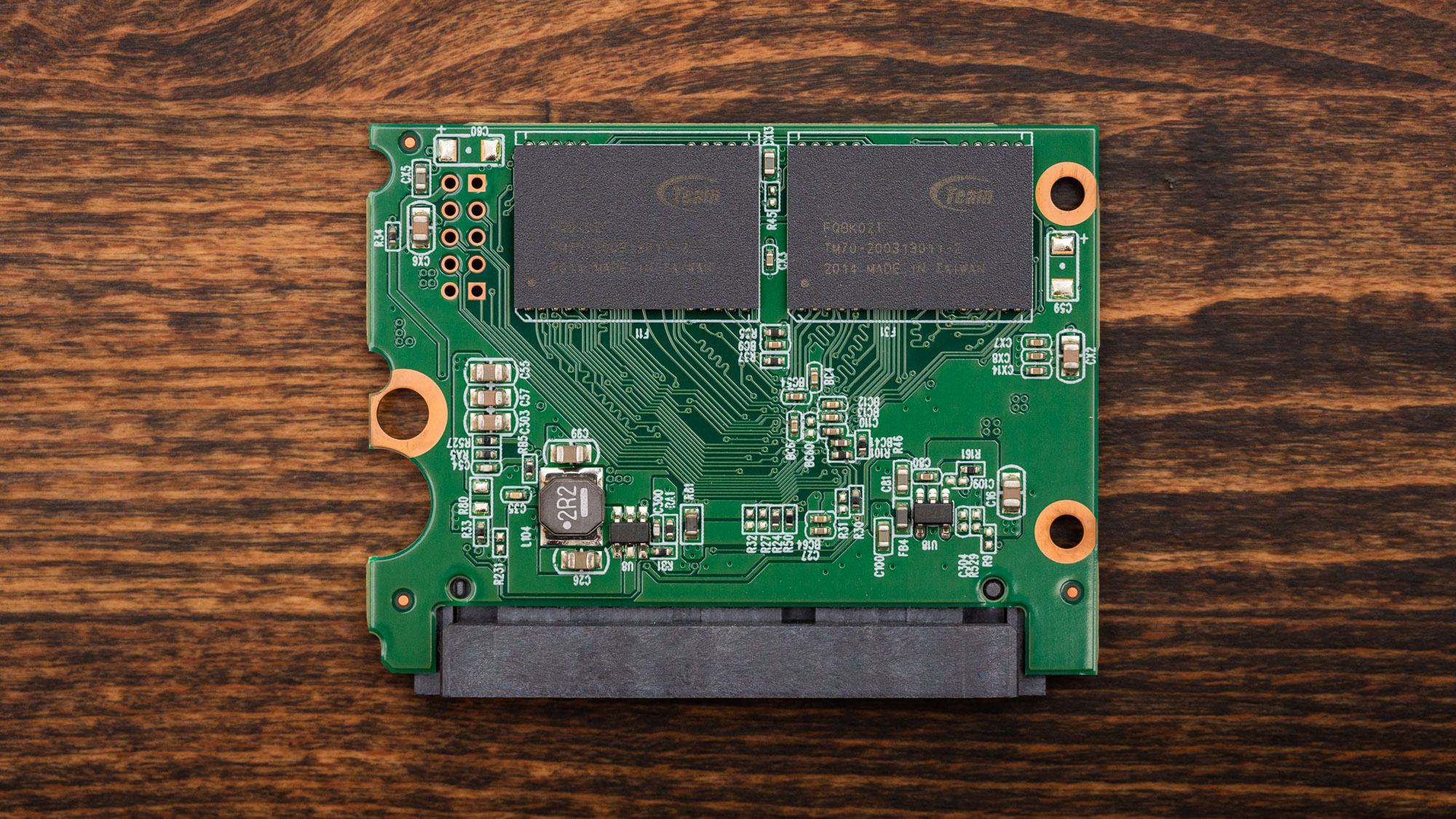
Team Group’s EX2 uses a Silicon Motion SM2258XT SATA 6 Gbps SSD controller to manage the flash. It’s an older SATA controller that’s based on a single 32-bit ARC CPU and it is produced on a low-power 40nm process node for cost-effectiveness.
The drive has a DRAMless architecture, too, meaning that instead of using a fast DRAM buffer space to update the FTL mapping table, the drive updates and retrieves LBA metadata on the much slower NAND. Unlike NVMe SSDs, SATA SSDs cannot harness Host Memory Buffer (HMB) to use the host system’s DRAM as a cache. The EX2 does support Trim and S.M.A.R.T. data reporting, though.
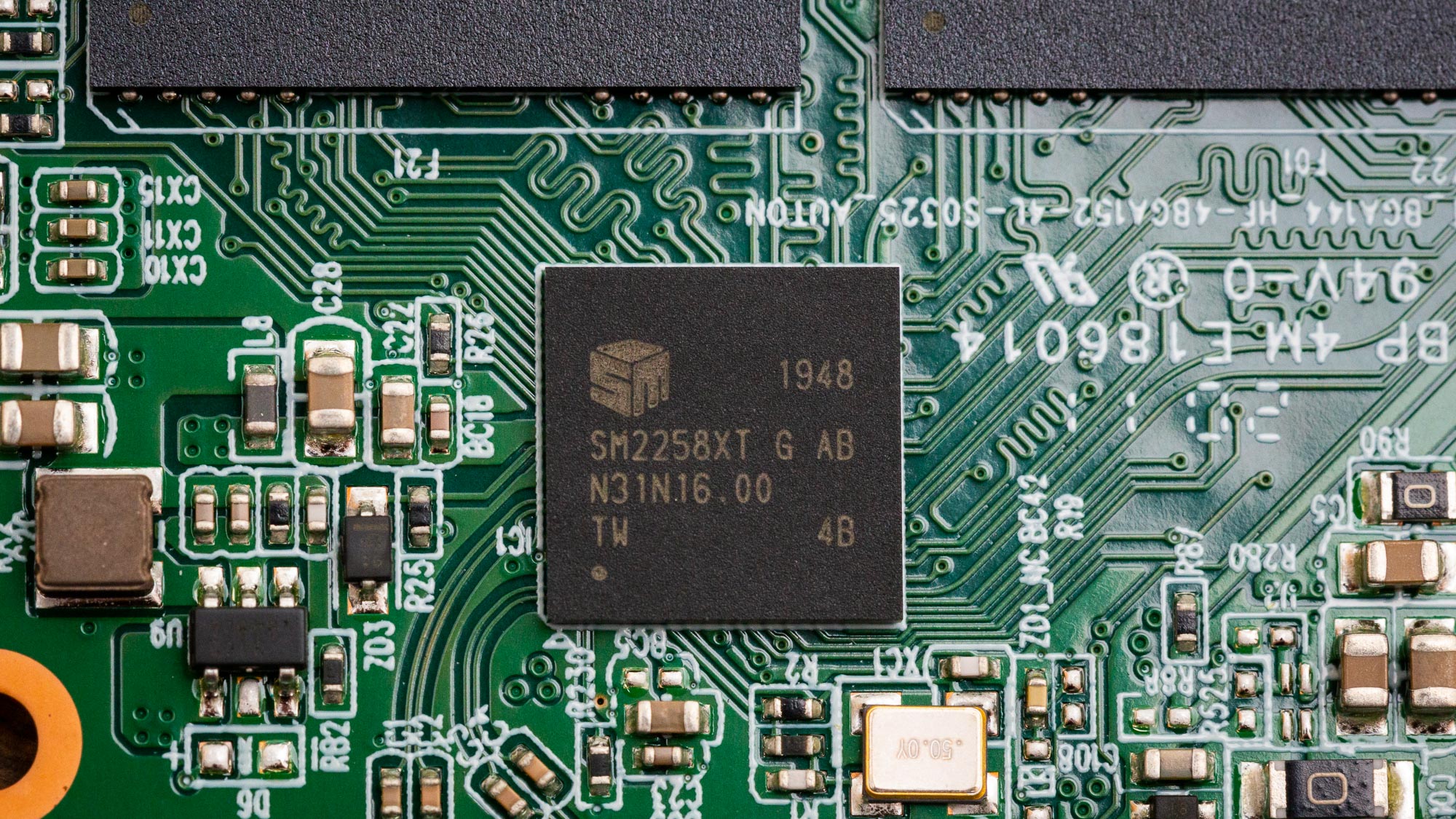
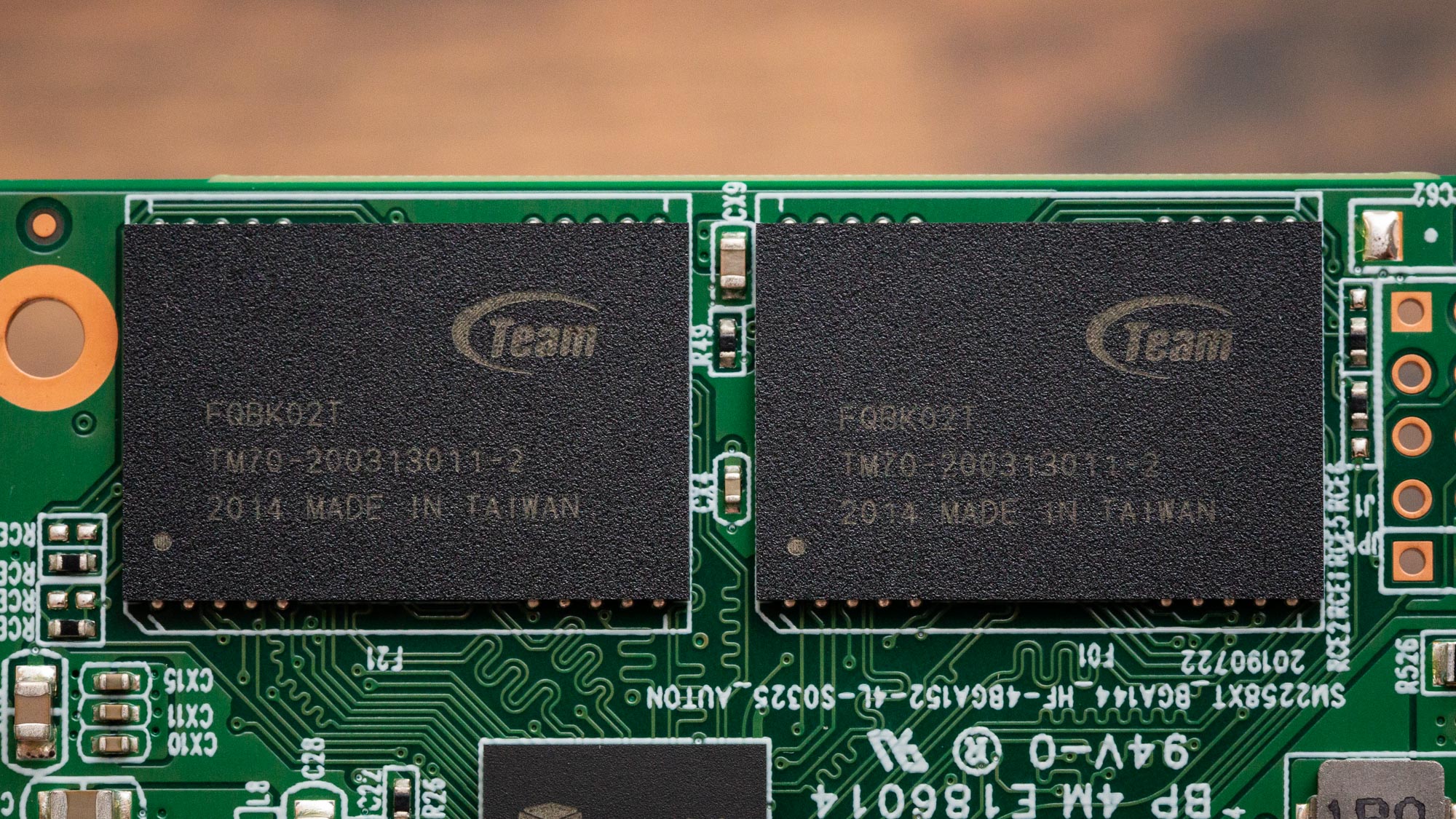
This four-channel controller interfaces with four SanDisk BiCS4 96L TLC NAND packages, two on each side of the PCB. This flash operates at Toggle DDR3.0 speeds of up to 800 MTps in a dual-plane configuration (doubling performance over one plane) and sips power at 1.8V. Each package contains four 512Gb NAND dies, for a total of sixteen dies.
MORE: Best SSDs
MORE: How We Test HDDs And SSDs
MORE: All SSD Content
- 1
- 2
Current page: Team Group EX2 Features and Specifications
Next Page 1TB Team Group EX2 Performance Results and Conclusion
Sean is a Contributing Editor at Tom’s Hardware US, covering storage hardware.